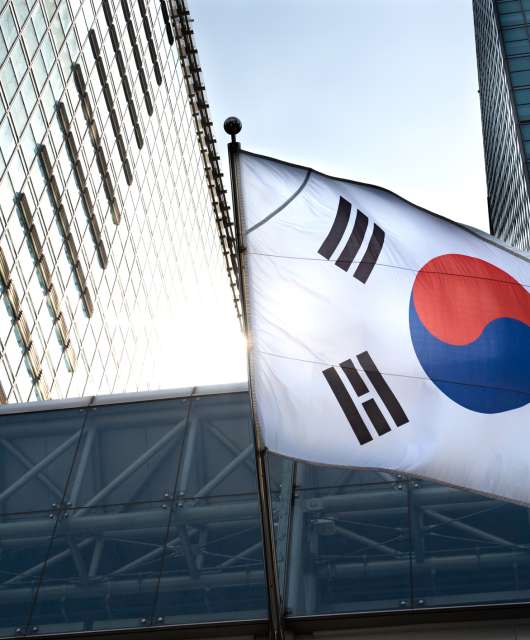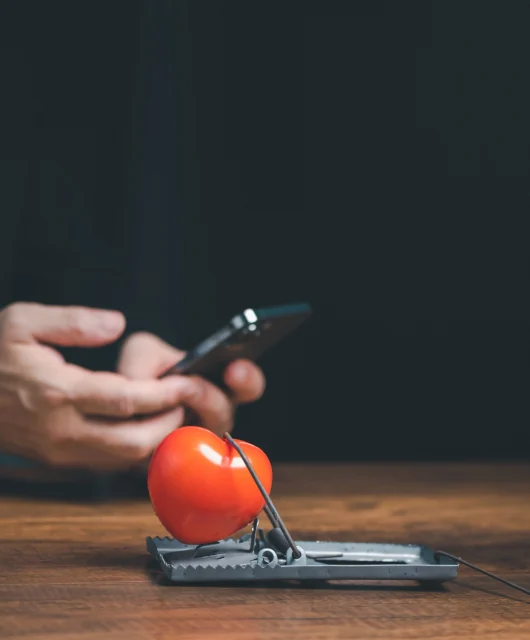Your phone may get hot due to high screen brightness, intensive apps or tasks, background processes or a deteriorating battery. These issues can strain the phone’s hardware, particularly the CPU, leading to increased heat generation.
While it’s typical for phones to generate heat with prolonged use, a persistent high phone temperature might hint at underlying issues such as malware, faulty charging equipment or internal damage. Delving into the reasons behind an overheated phone is crucial to ensure its long-term performance and durability.
Read on to learn the diverse factors that may answer the question, “Why does my phone get hot?”Discover troubleshooting insights, learn how to check the temperature of your phone and gain preventative tips to keep your device cool and functioning seamlessly.
1. Faulty Charging Equipment or Battery
Ever find yourself asking, “Why is my iPhone overheating while charging?” You’re not the only one. Damaged or faulty chargers, cables, and batteries are capable of heating your phone to dangerous levels. If you’re using charging equipment and notice a burning smell, scorch marks, or melting plastic, stop using it immediately. Be careful not to burn yourself when unplugging it from your phone or the electrical socket.
Replacing your faulty equipment or battery as soon as possible should resolve your overheated phone. It’s best to only use good quality charging accessories, especially the original cables and chargers if you still have them.
2. Warm Environment or Direct Sunlight
If you’ve ever left your phone out on a sunny day, you may have been shocked to find out it was very hot to the touch. Direct sunlight can be a common culprit of an overheated phone — so cover your phone from the sun while you’re outdoors.

Aside from prolonged, direct contact with the sun, your phone might also overheat after sitting in a warm environment for long periods, such as in your car on a hot summer day.
3. Overloading the Processor
Smartphones are just miniature computers, but a key difference between the two is that computers have internal fans to keep them cool and phones do not. Although smartphones are great at diffusing heat for everyday use, there’s a limit to what they can handle. If you have too much running on your phone at once, it can overload the processor and cause it to overheat.
Below are some examples of what might trigger an overloaded processor:
- Running too many apps at once
- Streaming video content like Netflix or YouTube
- Recording long videos on your phone
- Playing mobile games for an extended period
- Sub-optimal settings, like animated wallpapers or widgets
- Keeping your screen brightness on high every time you use it
4. Malware
Sometimes your phone seems to be overheating for no identifiable reason. If you know you haven’t left your phone in a warm environment and aren’t overloading the phone’s processor with lots of apps, the issue could be malware on your phone.
Just like desktop computers are susceptible to online viruses and malware — which will sometimes cause the computer’s processor to overload and shut down — the same can happen to your phone. You may have malware planted in your phone that keeps apps, widgets and other harmful processes running in the background that strain your phone’s processor.

When there’s too much strain on your processor, it gives off more heat. Use this guide to remove malware from your device and to stop it from overheating in the future.
5. Internal Damage
If your phone has other internal damage aside from the battery, this can cause it to overheat, too. It’s not uncommon to drop your phone, but doing so may result in loose parts that short circuit and overheat your phone. Other damages to your phone’s thermal paste may render it ineffective at transferring heat from the processor.
6. Blocked Ventilation
Your phone uses its charging port as ventilation, and if this gets blocked by debris, it may cause your phone to get hot. The blocked ventilation, in combination with a hot summer day or too much time spent in direct sunlight, is likely to make your phone overheat. You can try cleaning the charging port carefully with a cotton swab or toothpick.
7. Phone Age
Having an older phone also makes it more likely to get hot. Older hardware is likely to have wear and tear on components of your phone, such as the thermal paste of your processor. If the thermal paste is worn off, it will cause your phone to get hot quickly.
Consider taking breaks if you plan to use your phone for a long period or turn off features that you don’t need to use, like Bluetooth, to give your processor a break.
8. Long Gaming Hours
Intensive CPU (central processing unit) and GPU (graphics processing unit) usage generates heat, particularly in graphically demanding games, as these components work at full capacity. Continuous data usage in online games, coupled with rapid battery drain during resource-intensive tasks, further contributes to elevated temperatures.
To prevent overheating, take breaks between gaming sessions, avoid playing games while your phone is charging and close background apps.
9. Outdated Software
Outdated software on your phone can lead to overheating due to the absence of crucial performance optimizations and bug fixes in newer updates. Manufacturers regularly release software updates to improve resource management, enhance system stability and optimize the interaction between the operating system and the device’s hardware.
Without these updates, your phone might be working harder than necessary, struggling with resource management and generating more heat during regular use.
10. High Screen Brightness
High screen brightness can contribute to your phone overheating due to increased power consumption and heat generation. When you set your phone’s brightness to a higher level, it requires more energy to illuminate the screen, leading to a higher load on the device’s battery and processor. As a result, the hardware components, particularly the display and the processor, work harder — generating additional heat.
How to Check Phone Temperature
It’s important to remember that all phones get hot to some degree, but how do you know when the temperature is cause for concern? Regularly performing a phone temperature check can bring peace of mind. Typically, your phone’s internal temperature will range from 98.6 to 109.4 degrees Fahrenheit when operating normally.
Here are a few tips to check your phone temp and figure out if it’s out of the ordinary:
For iPhone Users
There’s no way to get a temperature reading on an iPhone, but you can use the Battery Health feature to view information about battery usage and what apps are draining the most battery.
If your iPhone feels hot to the touch, follow these steps to find out more:
- Go to Settings.
- Then choose “Battery.”
- Select “Battery Health” to view battery usage information.
Tip: In Battery Health, check if your battery is worn by looking at the Maximum Capacity and Peak Performance Capability. If it’s operating at less than 100% or isn’t operating at normal peak performance, your battery may need replacing.
For Android Users
Similar to an iPhone, you can’t check the phone temperature of your Android device. You can use an app called AIDA64 to give you important details on your phone’s hardware and software, such as how much RAM you’re using, how fast your CPU is having to run, and how hot your phone is.
Use the steps below to check out the battery usage on your Android:
- Open Settings.
- Click on “Battery.”
- Select “Battery Usage” to see your battery status from the last 24 hours.
How to Cool Down Your Phone
If you find yourself with an overheated phone, there are some simple steps you can take to troubleshoot it. Try the following to get your phone back in working order.
Avoid Direct Sunlight
If your phone is overheated because it was left out in the sun, remove it from the sunlight as soon as possible. As long as it remains under the sun’s rays, it’s unlikely that it will be able to cool down.
That said, don’t put your phone in the freezer — some think this will bring the phone’s temperature down faster, but drastically changing the temperature from hot to cold can cause further damage to your phone. Instead, just bring it inside in a cool, dry place and leave it alone for a few minutes, and it should return to normal.
Turn on Airplane Mode
Airplane mode can help combat an overheated phone because it turns off all nonessential programs that might be running in the background. This may speed up the cooling process.

Another option is to completely turn your phone off, which is one of the fastest ways you can get your phone’s temperature back to normal.
Close Out Your Apps and Keep Them Updated
Running a ton of apps in the background can push your phone to its limits. If it’s overheated, close all your apps down until the temperature returns to normal.
Additionally, if you haven’t updated your apps in a while, it’s a good idea to do so. Many app updates tackle bug fixes that can improve the efficiency of your phone and keep the processor from overloading in the future.
Take the Case Off
Phone cases are critical for protection from physical damage, but many of them have poor ventilation. They can trap the heat in your phone and interfere with it cooling down. If your phone is overheated and you have it in a case, take the case off to help bring the temperature down.
Place It Next to a Fan
If you have access to a fan or a car AC, give your phone access to cool air to speed up the cooling process. Even if you don’t have access to a fan, simply blowing on your phone yourself or fanning it with your hands can help it return to a normal temperature more quickly.
How Do I Stop My Phone From Overheating?
If you want to avoid your phone overheating, there are a few simple precautions you can take. Use these preventative measures to stop your phone from getting too hot and becoming unusable.
Keep Your Apps Updated
If your phone has ever overheated for no apparent reason, you may want to investigate some of your apps. One or more of them could have a bug that’s causing your phone to overheat. To keep your phone performing optimally overall and to prevent overheating in the future, it’s best to always keep your apps and phone settings updated.

Purge Unused Apps
Unused apps running in the background cause your phone to work harder than it has to and strain the battery and phone processor. This can result in overheating. It’s a good idea to regularly clean out your phone of any unused apps or downloads that are weighing your phone’s processor down to prevent overheating in the future.
Charge Your Phone Correctly
If you notice your phone heating up while charging, you may be concerned about potential fire hazards. Did you know that using your phone while it’s charging causes your phone to produce more heat? You can prevent an overheated phone by leaving your phone alone while it’s charging.
Using the incorrect charger for your phone can also contribute to overheating. Some chargers are designed for stronger phones, and if you use a charger that’s not suited for your particular phone model, it can cause battery damage and overheating. The main thing to ensure is that your phone’s input is the same as the output of the charging adapter you’re using.
Turn Off Unnecessary Settings
Certain phone settings, like high brightness, GPS or Bluetooth, can keep your phone’s battery processor in overdrive unnecessarily and lead to overheating. If you want to know how to fix overheating phone batteries and avoid this, remember to turn energy-draining settings off to preserve your phone’s energy and keep it cool.
Use an Antivirus Software
Sometimes overheating is caused by malware that’s been downloaded on your phone or bugs in your apps. Using antivirus software is one of the best ways to protect your phone from overheating as well as from data and security breaches.

While antivirus software is already built into iPhones, Android users can benefit from a mobile antivirus that detects viruses, malware, and other threats that might compromise your phone. Panda Security offers free antivirus software for Android that can work for your phone and tablets.
While an overheated phone may seem like cause for concern, it usually takes a quick fix to get your phone back in working order. Don’t leave your phone out in hot environments, and limit how many apps and programs you have running on your phone at once to avoid overheating.
Most importantly, protect yourself from malware and other cyber threats by having the proper antivirus software installed on your smartphone and computer.
Why Is My Phone Hot and Losing Battery?
If your phone is hot and losing battery quickly, one significant factor could be an overloaded CPU. The CPU is the brain of your device, responsible for executing tasks and managing various processes. When the CPU is overloaded, it works at its maximum capacity, consuming more power and generating additional heat. Follow best practices to maximize your phone’s battery life.
Why Is My iPhone Hot?
Apple users frequently voice concerns like, “Why does my iPhone keep overheating?” If you’ve noticed your iPhone getting hot frequently, it might be worth checking the battery health through the settings or consulting with Apple support to determine if a battery replacement is necessary. Addressing background processes, optimizing app usage and monitoring battery health can help mitigate overheating issues on your iPhone.
Why Does My iPhone Keep Overheating?
If iPhone overheating is a recurring problem for you, it may be due to one of these contributing factors:
- Too many apps open
- Old or faulty iPhone battery
- iPhone needs software update
- Hot environment/direct sunlight
- Charging and using your iPhone simultaneously
Why Does My Phone Get Hot When Charging?
Your phone may get hot while charging due to several factors. Fast charging technologies designed to quickly replenish your battery can lead to increased heat during the charging process. External temperature also plays a role, as charging in a warm environment can intensify heat generation. Background processes, such as updates and data syncing, may also contribute to the overall rise in temperature.
Why Does My iPhone Get Hot Fast?
If your phone is getting hot faster than usual, it could be due to a rapidly deteriorating battery, an unoptimized app running or even consistently high screen brightness. In general, it’s an indicator that your phone’s thermal management system is struggling and may benefit from professional inspection.
How Do I Stop My Phone from Overheating on FaceTime?
Video calls, especially long ones or those in poor signal areas, demand significant processing power and cellular/Wi-Fi usage. This causes your phone to work harder. Make sure you have a strong Wi-Fi connection and close other apps before FaceTiming. Consider taking breaks during very long calls.
What’s The Temperature of My Phone?
Typically, a smartphone’s internal temperature ranges from 98.6 to 109.4 degrees Fahrenheit while operational. For iPhone users, there isn’t a way to display your phone’s internal temperature in numerical form, but a “Temperature: iPhone needs to cool down” warning will be triggered if the device exceeds safe operating temperatures.
For Android users, a direct temperature reading isn’t always available in the standard settings, but some manufacturers might include it in their custom UI. Additionally, there are third-party apps that can provide real-time CPU and battery temperature readings. These offer a good way to monitor your device when you suspect overheating.






2 comments
Very helpful 😊
My Android Vivo gets extremely hot using Google Search and its contents for some time. My partner notices the same behaviour.